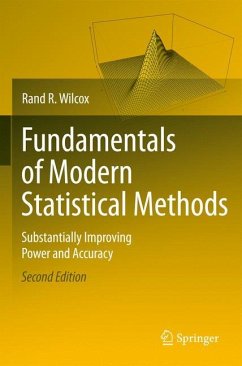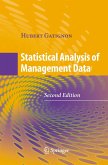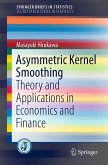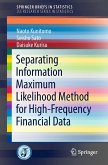Conventional statistical methods have a very serious flaw. They routinely miss differences among groups or associations among variables that are detected by more modern techniques, even under very small departures from normality. Hundreds of journal articles have described the reasons standard techniques can be unsatisfactory, but simple, intuitive explanations are generally unavailable. Situations arise where even highly nonsignificant results become significant when analyzed with more modern methods.
Without assuming the reader has any prior training in statistics, Part I of this book describes basic statistical principles from a point of view that makes their shortcomings intuitive and easy to understand. The emphasis is on verbal and graphical descriptions of concepts. Part II describes modern methods that address the problems covered in Part I. Using data from actual studies, many examples are included to illustrate the practical problems with conventional procedures and how more modern methods can make a substantial difference in the conclusions reached in many areas of statistical research.
The second edition of this book includes a number of advances and insights that have occurred since the first edition appeared. Included are new results relevant to medians, regression, measures of association, strategies for comparing dependent groups, methods for dealing with heteroscedasticity, and measures of effect size.
Without assuming the reader has any prior training in statistics, Part I of this book describes basic statistical principles from a point of view that makes their shortcomings intuitive and easy to understand. The emphasis is on verbal and graphical descriptions of concepts. Part II describes modern methods that address the problems covered in Part I. Using data from actual studies, many examples are included to illustrate the practical problems with conventional procedures and how more modern methods can make a substantial difference in the conclusions reached in many areas of statistical research.
The second edition of this book includes a number of advances and insights that have occurred since the first edition appeared. Included are new results relevant to medians, regression, measures of association, strategies for comparing dependent groups, methods for dealing with heteroscedasticity, and measures of effect size.
From the reviews of the second edition:
"It is a well-written and neatly organized book that introduces modern robust statistical methods ... . the book not only a handbook for applied researchers who need to conduct reasonable and interpretable data analysis, but also a good textbook for non-statistics students and statistics undergraduate students. This is the only book on the subject written for this audience to my knowledge. ... It provides insights and more methodological options in statistical analysis for students and applied researchers." (Tian Siva Tian, Psychometrika, Vol. 76 (1), January, 2011)
"It is a well-written and neatly organized book that introduces modern robust statistical methods ... . the book not only a handbook for applied researchers who need to conduct reasonable and interpretable data analysis, but also a good textbook for non-statistics students and statistics undergraduate students. This is the only book on the subject written for this audience to my knowledge. ... It provides insights and more methodological options in statistical analysis for students and applied researchers." (Tian Siva Tian, Psychometrika, Vol. 76 (1), January, 2011)








